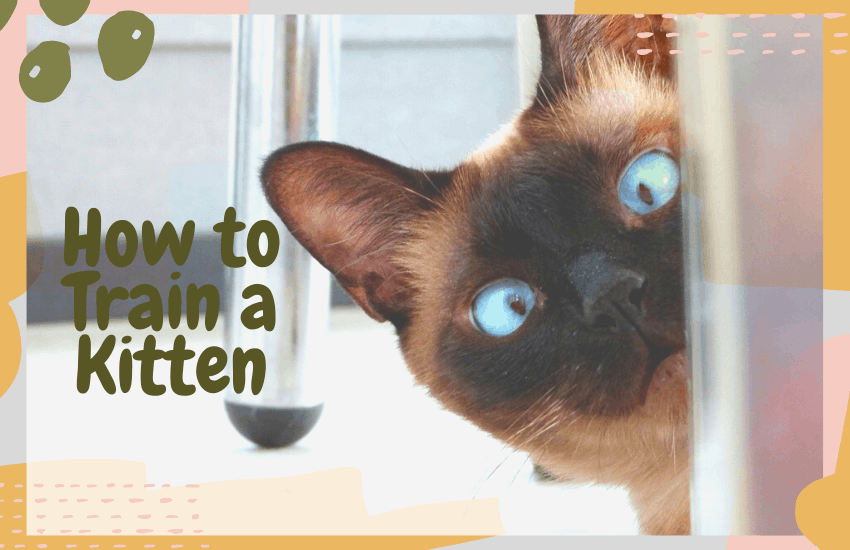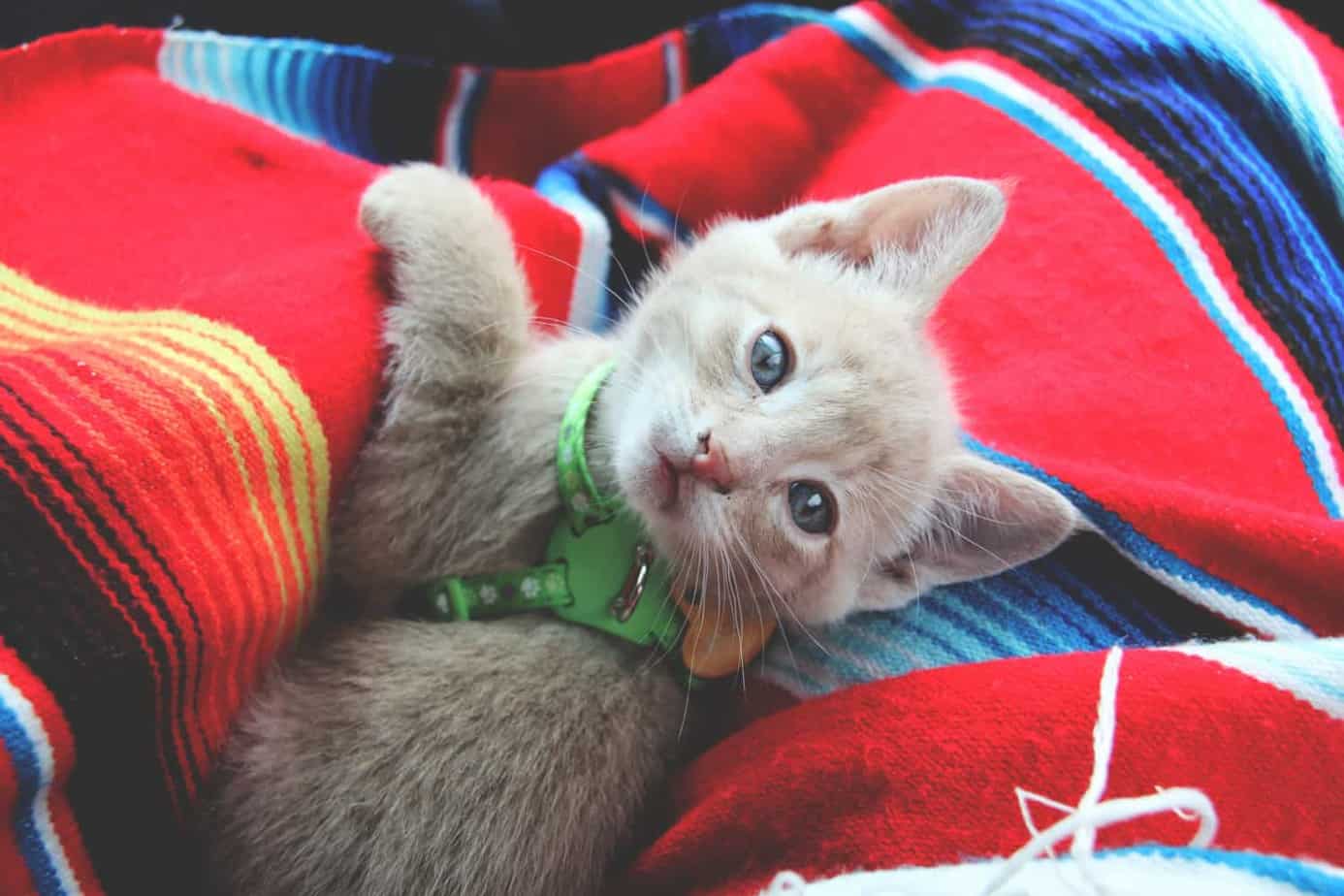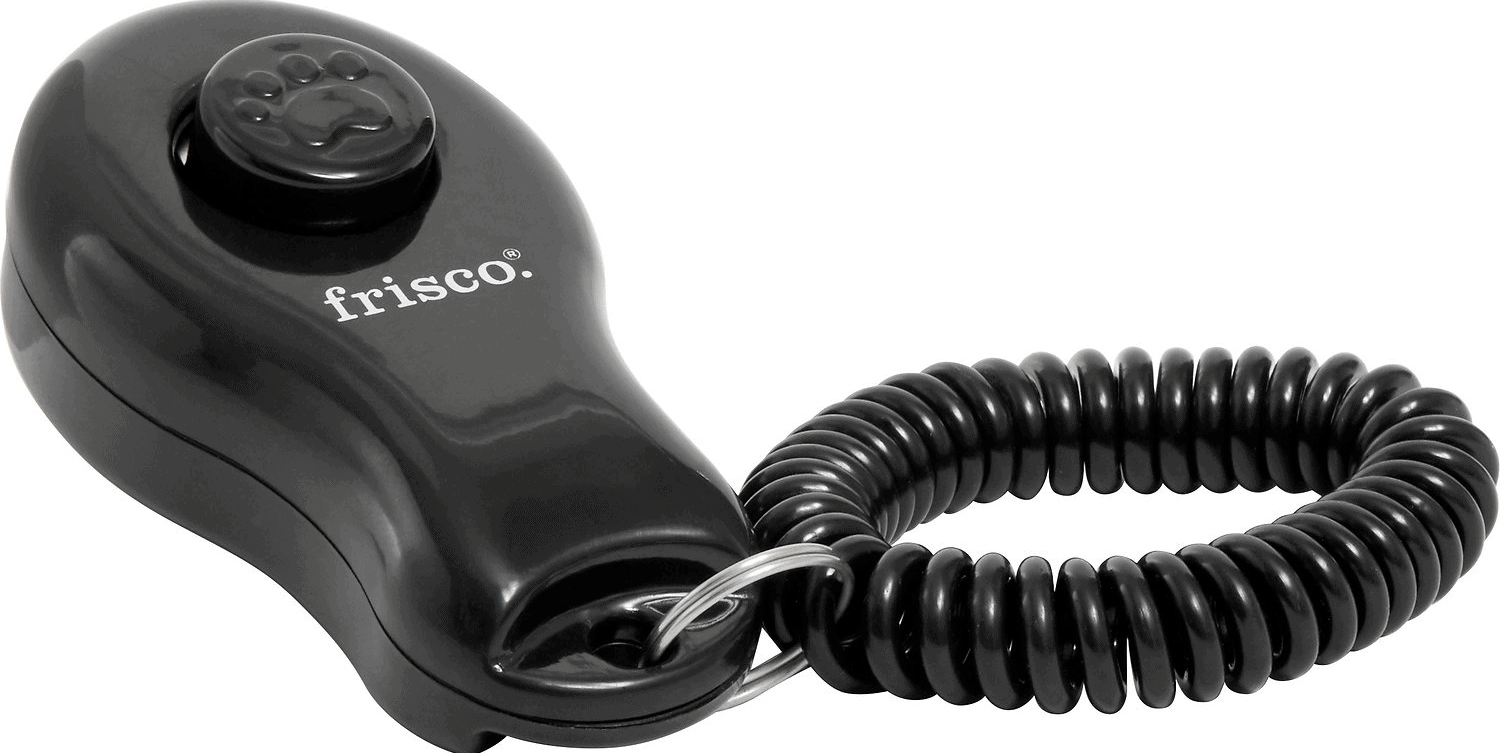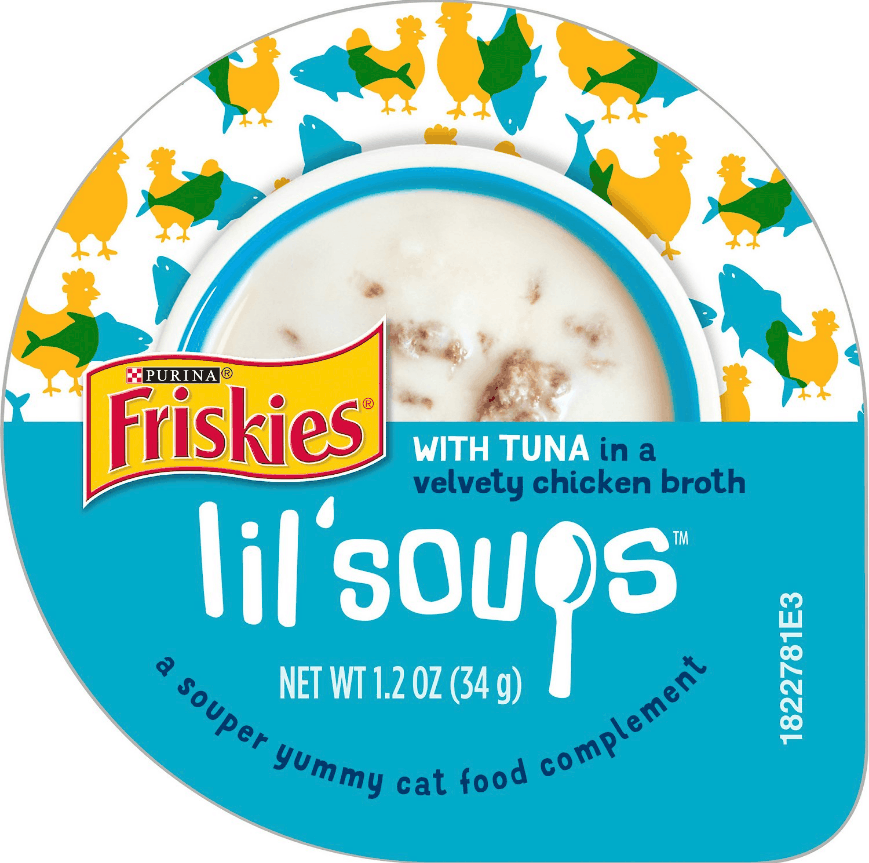
There is nothing quite as exciting as bringing home a new furbaby, especially when it’s a cute as a button kitten. From the start, there are so many things to consider: what to name her, what kind of food to feed her, what color collar she should wear – the list goes on and on!
While all of these things are definitely priorities for any cat owner, new and old, there’s one thing that might not bear much thought at first – kitten training!
Table of Contents
Reasons to Train Your Kitten
It’s true that cats don’t really require much training, as they’re typically independent and self-sufficient creatures. Some people even suggest that, unlike dogs, it’s next to impossible to train a cat because they have a mind of their own.

Sure, it’s true that cat’s are pretty low maintenance, but they’re also super intelligent and susceptible to all sorts of training. So, what can you train a cat to do? Pretty much anything!
There are many reasons to train a kitten. Pet parents have been known to teach their cats basic commands, eliminate bad behavior, and even to perform tricks.
Basic Training for Kittens
First, there are some basic behaviors to train your new kitten to do, like litter training or toilet training. You’re probably thinking, “don’t cats know how to use a litterbox from birth without litter training? It’s basic instinct after all!”
You might be surprised to know that using a kitty litter box is something a kitten has to be taught. It’s possible you just didn’t notice because their mom is usually the one to teach them!
At around four weeks of age, a mother cat will teach her kitty how to use the litter box. It’s only when a mother cat is indifferent about this maternal duty that a kitten doesn’t know how to use the litter box. At that point, any cat owner has to step in and take the reins to litterbox train their kitten.
It’s also a great idea to crate train your kitten while she’s still young because it can reduce a lot of anxiety down the road – for both you! Getting her used to her cat carrier and being in the car as a kitten will make trips to the vet, or even long-distance moves, a breeze. Trips to the vet are already stressful enough; there’s no need to add the anxiety of riding in the car to it!
To associate her crate with something good, put her food and water dishes inside and leave the door open. She’ll get comfortable being inside of it and it will be less of a struggle to get her into it when you need to.
Another tip is to leaving the crate out with the door open and placing a blanket that smells like you inside. Having your scent in the crate will make her less anxious, and the ability to come and go will allow her to get used to it on her own terms and in a low-stress situation.
Training her to use a harness and leash combo is also much easier when she’s a kitten. Speaking from personal experience, I adopted one of my cats when he was about a year old.
In that time, I don’t think he had ever been exposed to a harness because from the moment it’s buckled around his torso, he seems to forget how to exist. His first instinct is to walk but it’s like he forgot how. He’ll weave around before finally flopping over in defeat.
Made of 100% polyester, covered with breathable mesh. Extra Small - Chest Girth 10"-15", Neck Girth 8.0", the neck girth is not adjustable, please choose the right size according to the neck girth and add about 1" to the neck girth.
I’ve had my other cat since she was a kitten and she was exposed to a harness from a young age. Her reaction is the complete opposite of his. So, take it from me – get her used to a harness now. You never know when you’ll want to take her to explore the great outdoors!

Cat Training for Preventative Measures
Most pet parents of a new kitten don’t give much thought to their feline friend ruling the roost. So what if she’s jumping up on the counters or curling up on your pillow at night? She’s a living, breathing member of the family.
While most are okay with these behaviors, others may not feel quite the same way. So, if you want to keep your cat from jumping on the counters or staying off the bed, it makes perfect sense to address those behaviors while she’s a young kitten.
Common Behavior Problems That Require Training
Unfortunately, there are times when a kitty can develop a behavioral problem that will need to be addressed. Some common examples of behavioral problems cat parent’s experience include aggression toward people, biting and scratching, clawing the furniture, and not using the cat litter box.
With a commitment to finding the root of the problem, a little patience, and some training, cat parents can overcome most behavioral problems.
Training Basics & Tips
Whether you’re training your kitten for the basics, or you want her to learn some cool tricks like “sit,” jumping through hoops, or to come running when you call her name, there are some basic guidelines that will make the experience a little easier.
Be Patient and Keep Training Sessions Short
It’s important to remember training a kitten isn’t a “one and done” kind of thing. It can be a time-consuming process, so it’s crucial to be patient with your young kitten. If you feel like you’re getting frustrated, it’s okay to take a break.
Keeping your training sessions short is also beneficial in a couple of different ways. First, it can reduce the chance you’ll get frustrated with her if she isn’t catching on as quickly as you’d hoped.
Second, cats have a short attention span and can get bored easily. By keeping your cat training sessions limited to 15-20 minutes a day and mastering one behavior or trick at a time, you’ll keep her interested and you’ll feel a lot less burnt out.
Change Things Up
Just like you don’t want her to experience boredom from training sessions that are too long, practicing in different rooms and at different times of day will keep things interesting for her. It also teaches her to perform the desired cat behavior in a variety of situations.
Since you’re training sessions should be short, try working on a trick during a commercial break in the living room, or while you wait for your food to cook in the kitchen. A change of scenery can be a good thing!
Use Rewards
Animals and humans alike love to be rewarded, so it’s a no-brainer that rewarding your kitten for good behavior will help with training! Whenever she seems to be catching on to a command or does exactly what you want, reward her with her favorite tasty treat.
Designed to help clean teeth, reduce tartar buildup and freshen your cat’s breath, these crunchy treats are made with natural ingredients plus added vitamins, minerals and other nutrients that make them a nutritionally complete and balanced snack for an adult cat.
Doing so will teach her to associate the action with something positive and she’ll be more likely to repeat the behavior in hope of earning a tasty treat.

Another form of reward-based training is clicker training. This method basically uses a two-part system to train all types of animals. According to the Karen Pryor Clicker Training website, clicker training is when, “desirable behavior is usually marked by using a “clicker,” a mechanical device that makes a short, distinct “click” sound which tells the animal exactly when they’re doing the right thing.”
In the easy-to-read beginner's guide, Karen Pryor, the world's leading clicker training expert, tells you how to teach your cat: to come when called; to play without biting or scratching; to stay off the table, and more.
The clicking noise combined with a mode of positive reinforcement, such as a treat or a head scratch, lets your kitten know she’s behaving in the way you’d like.
These Temptations treats are 100% nutritionally complete and balanced for adult cats and are just under 2 calories per piece. Shake the bag or tub to capture your cat’s attention and watch her run towards you with pure excitement, ready for her next reward!
Associate Bad Behavior with Something Unpleasant
One trick experts suggest is associating bad or unwanted cat behavior with something unpleasant. No, this doesn’t mean spraying her with water from a spray bottle or shaking a jar of pebbles at her. Scaring her with things like that will not only cause fear and anxiety for her, it will also damage the bond the two of you share.
Instead, experts recommend using items cats have an aversion to as a means of correcting an unwanted cat behaviour like jumping on the bed, scratching the furniture, or playing with something they shouldn’t.
If you want to keep her out of a certain area or room, for example, trying placing cotton balls soaked in citrus near the doorway. Likewise, using double stick tape can help eliminate your feline friend jumping on the counters because they don’t like the sticky texture.
What to Do If Training Isn’t Working
If you’ve taken all the steps to train your kitten as a means of addressing a behavioral problem to no avail, don’t throw in the towel just yet. The next step is to consult your vet. There might be an underlying problem that is causing her to act out.
For example, an aversion to the cat litter box is often caused by an association of fear or pain. If you’re cat suddenly stops using the litter box, she could be experiencing constipation or urinary crystals that make it painful to go to the bathroom. For that reason, she may begin to see the kitty litter box as the source of that pain. No matter what, consulting your vet is never a bad thing!
Top Product Recommendations
Frisco Pet Training Clicker with Wrist Band

Train your cat for less than $5. The Frisco Pet Training Clicker features a wrist band so you’ll always have it on hand. The ergonomic design is designed to be comfortable and features a flexible bungee wrist band so you can train right when you need to. A clear click sound is used for positive reinforcement. At just 2.7 inches, it fits into your hand and is a practical solution to training throughout your day. Even better, it’s rated an average of 4.5 out of 5 stars based upon nearly 90 customer reviews. Buy Here.
Train your pet with positive reinforcement using the Frisco Pet Training Clicker with Wrist Band. When you want your pet to know you like their behavior, simply click the clicker and reward them a treat! The ergonomic design is comfortable and easy to use during training sessions.
Friskies Party Mix Crunch Beachside Cat Treats

Treat your cat with these tasty treats, made featuring real ocean whitefish as the first ingredient. Shrimp, tuna, and crab flavors are sure to delight, all with a crunchy texture to support dental health. With just under 2 calories per treat, you don’t have to feel guilty about these whimsically shaped cat treats. Use these for positive reinforcement as you train, and know that your cat will not only love the flavor but also benefit from packed, balanced nutrition. Available in 2.1 ounces to 30-ounce bags; Buy Here.
Give your seafood-loving kitty a treat he’ll leap for with Friskies Party Mix Crunch Beachside Cat Treats. They pack whisker-licking flavor that’s sure to impress even the pickiest seafood connoisseur, with real ocean whitefish first, plus shrimp, crab and tuna flavors in every crunchy bite.
Friskies Lil’ Soups with Tuna in a Velvety Chicken Broth Lickable Cat Treats

Velvety chicken broth and real tuna add some pizzazz to your cat’s regular food. Meant for supplemental feeding, Friskies offers a way to encourage your finicky cat to eat their food. The broth is also a way to add moisture (and hydration) to dry cat food or can be used as a treat in moderation. Simple ingredients, with real tuna and chicken broth, provide a flavorful blend and appealing aroma for any cat. 81 percent of customers and their cats rated this bowl a 5 out of 5 stars. Available in 1.2-ounce cups, in sets of 8, 16, 32, or 48. Buy Here.
Give your cat another reason to bound for her bowl with Friskies Lil' Soups with Tuna in a Velvety Chicken Broth Lickable Cat Treats. The delicious scent tells your kitty something awesome is on the menu, while the tender bites make dinner time irresistible.
FAQs
When should you start training a kitten?
When your young kitten masters social skills it is time to start training your kitten. For the best results, you should perform kitty training before you start feeding her as the food can be a bigger reward on an empty stomach, compared when she’s full. Keep in mind not to starve your kitty if you are eager to train her because it can have the opposite effect…No one performs well on an empty stomach.
Is it a must to train my kitten?
Not necessarily. Kittens use their cat instincts to use a litter box to go potty because it’s in their nature to ‘go’ in dirt or sand. That being said, you can simply show or teach the cat where your litter box is and most of the time, that will do the trick.









Leave a Reply